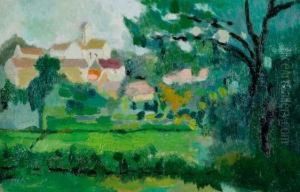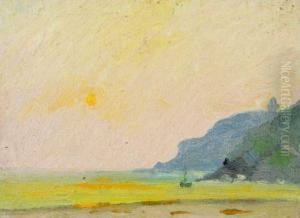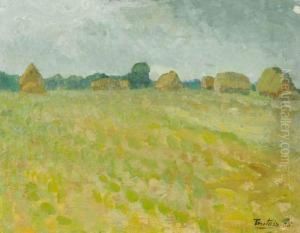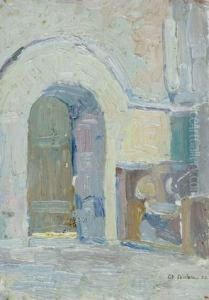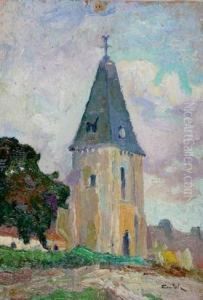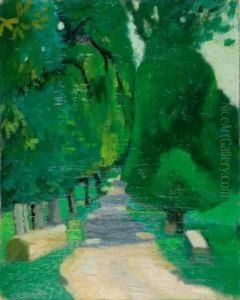Charles Victorien Toutain Paintings
Charles Victorien Toutain was a French sculptor born on April 2, 1865, in Tours, France. He studied at the École des Beaux-Arts in Paris under the tutelage of renowned sculptors like Alexandre Falguière and Antonin Mercié. Toutain was very much a product of his time, adhering to the academic artistic standards of the late 19th and early 20th centuries. His work was characterized by its classical style, attention to detail, and often historical or mythological subject matter.
Toutain's career was marked by several achievements, including accolades at the Salon, an annual art exhibition in Paris. He was known for his bronze sculptures, which often depicted allegorical figures, animals, and occasionally, public figures. His works were typically cast in bronze, a medium that allowed him to capture intricate details and convey a sense of permanence and gravitas.
During his lifetime, Toutain also engaged in creating war memorials, which were a significant part of French cultural heritage, especially after World War I. His memorials often featured figures that symbolized grief, victory, and patriotism, and they served as sites of memory and mourning for communities affected by the war.
Toutain's work was part of the cultural landscape during a period of great change in art, as the traditional academic styles gave way to modernist movements. While he did not gain the same level of fame as some of his contemporaries who embraced these new movements, his sculptures still hold a place in the story of French art.
Charles Victorien Toutain passed away on August 25, 1951, in Paris. His legacy lives on in the pieces he created, many of which can still be seen in museums, public spaces, and private collections. Although he may not be as well-known as some of his peers, his contributions to the field of sculpture and to French art history remain significant.
